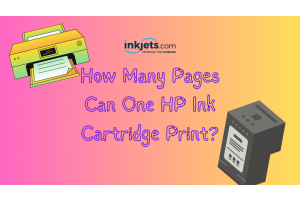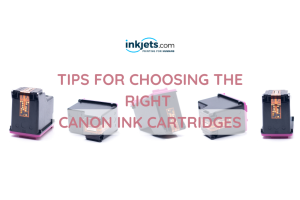
Ink is an essential component in our everyday lives, whether it is used to print
important documents or to create beautiful artworks.
It often comes in two forms: dye-based and pigment-based.
Although they might seem identical, there are stark differences between them,
including their chemical composition, color vibrancy, longevity, and usage.
Let's dive into the intricacies of dye and pigment-based inks to understand
their individual characteristics.
Understanding Ink: What is it?
Before distinguishing between dye- and pigment-based inks, it's crucial to comprehend
what ink is.
Essentially, ink is a liquid containing various components that leave an impression or color
when applied to a surface.
These components generally include colorants (dyes or pigments), a carrier
(usually water, oil, or another solvent), and other additives that enhance the ink's
performance.


Dye-Based Inks
Dye-based inks are produced by dissolving colorants in a liquid. These colorants are completely soluble,
meaning they combine with the liquid to create a uniform solution.
Because of this, dye-based inks tend to be more vibrant and produce a wider color gamut, making them
a popular choice for printing high-quality photographs and images.
They're also typically more cost-effective compared to their pigment-based counterparts.
However, dye-based inks have their drawbacks. Their solubility implies that they can bleed or spread
on paper, affecting the sharpness of the printed material.
Furthermore, they are highly susceptible to fading when exposed to UV light and may not be waterproof.
Thus, they aren't the best choice for documents or artwork meant for long-term preservation.


Pigment-Based Inks
Unlike dye-based inks, pigment-based inks are composed of tiny, insoluble color particles
suspended in a liquid carrier.
These particles sit on top of the paper instead of being absorbed into it, resulting in a sharper
and crisper print.
Pigment inks are renowned for their longevity and resistance to fading. They're also typically water
and smudge resistant, making them a preferable choice for printing documents that need to
withstand the test of time.
This makes pigment-based inks ideal for archival quality prints, professional documents, and
outdoor applications.
That being said, pigment-based inks have their limitations too. They often provide a smaller color
gamut compared to dye-based inks, and they can be more expensive.
Moreover, the quality of prints depends heavily on the compatibility between the ink and
the paper used.
Read: What is Paper GSM and How Does it Affect Your Printing?
Dye Vs. Pigment: The Trade-off
Choosing between dye and pigment-based ink often depends on the application.
If your priority is to print vibrant photos, then dye-based inks would be the best
choice due to their wider color range.
However, if longevity and durability are your primary concerns, then pigment-based
inks would be more suitable.
It's also worth noting that technological advancements have blurred the line between
the two types of inks.
For instance, some modern pigment-based inks are designed to match the color vibrancy
of dye-based inks.
Conversely, improvements in dye-based ink technology have led to enhanced UV and
water resistance.
Ink and Printers
Printer manufacturers often design their printers to use either dye-based or pigment-based inks.
Some professional-grade printers even have the option to switch between the two.
It's essential to use the right type of ink for your printer, as using the wrong one can lead to subpar
print quality or potentially damage your device.
Ink and Environment
It's important to mention the environmental implications of ink usage.
Both dye and pigment-based inks can have environmental impacts, especially when disposed of improperly.
Most inks, especially those used in industrial printing, contain volatile organic compounds (VOCs) that can
contribute to air pollution. Encouragingly, several companies are developing environmentally friendly
alternatives, including vegetable-based and UV-curable inks.
Conclusion
Ink, in its many forms, has a profound impact on how we communicate, preserve, and express.
Understanding the differences between dye and pigment-based inks is fundamental to making
an informed decision about their usage in different applications.
Both have their unique strengths and weaknesses, and choosing the right one can greatly enhance
the outcome of your printing project.
As technology evolves, we can look forward to further developments that could potentially amalgamate
the best qualities of both types of inks, providing vibrant, long-lasting prints in an environmentally
friendly way.








